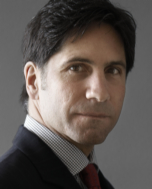The Other Healthcare Debate
By Chris Collins
Vice President and Director, Public Policy
amfAR, The Foundation for AIDS Research
March 15, 2010—Domestic health reform is what we read about in the headlines, but important hearings in the House and the Senate this week speak to a parallel debate that is just as heated and that could lead to fundamental changes in America’s approach to international health and development.

Chris Collins |
Some prominent voices assert that the response to the global AIDS epidemic has received too large a share of attention in recent years. In an era of limited resources, the argument goes, it is time to “rebalance” funding toward other health priorities. AIDS advocates strenuously object, pointing to significant successes in AIDS programming and the growing need to deliver lifesaving AIDS treatment and prevention services.
Programs supported by the President’s Emergency Plan for AIDS Relief (PEPFAR) have allowed nearly 340,000 babies to be born without HIV, and a recent study from Stanford University found that PEPFAR averted 1.2 million deaths in Africa and in only three years cut the HIV/AIDS death toll by 10.5% in targeted countries. PEPFAR funding also supports the Global Fund to Fight AIDS, Tuberculosis and Malaria, which this week released a report suggesting that, with sufficient investment, we could virtually eliminate mother-to-child transmission of HIV within five years. That is an opportunity we cannot afford to squander.
We should not be deciding which diseases to treat and which to shortchange. The real question is how to advance global health most effectively. And part of the answer may lie in President Obama’s proposed Global Health Initiative (GHI), which is designed to broaden and better integrate America’s international health efforts. If GHI’s more integrated approach can build on, rather than dismantle, successful programming like PEPFAR, it could have a profound impact on health and development around the world. The problem is that the President’s broader vision will be undermined unless Congress sees beyond the rhetoric pitting disease against disease and commits significantly increased resources to global health overall.
For many years, respected voices both within and outside government have recognized the enormous potential of substantially increased global health investments to serve America’s humanitarian, diplomatic, and security goals. In 2008 a panel of experts convened by the National Academy of Sciences noted that responding to global health has “the power to both save lives and enhance U.S. credibility in the eyes of the world.” The panel called for doubling U.S. investments over the Obama Administration’s first term. That same year a National Intelligence Council assessment noted that a broader global health effort, similar to the U.S. AIDS response, could help achieve multiple diplomatic priorities.
Rather than embracing this holistic approach, there are those who say we can’t afford to sustain increased investments in fighting AIDS—no matter how successful they have been—and that funds should be shifted to cheaper interventions and overall health systems. What this argument misses is that creating sustainable health systems that serve whole communities requires a range of interventions, some at very low cost, like childhood vaccines, and others at higher cost, like AIDS treatment. As Dr. Peter Mugyenyi of the Joint Clinical Research Center in Uganda has observed, you can’t build health systems by turning away growing numbers of people needing AIDS treatment, particularly in countries hardest hit by the epidemic.
When thinking about building effective health responses, it’s important to remember the complex impacts of major diseases like AIDS. Anyone at the front lines of the AIDS response knows that diseases do not exist in isolation. An analysis of global health data released this month finds that AIDS and other chronic diseases are creating a “vicious cycle of illness and poverty,” so addressing these diseases is crucial to making progress on other health goals, including children’s health. What is needed is increased investment in what works across multiple health areas.
In his fiscal year 2011 budget, the President has proposed urgently needed increases in several areas, including nutrition, maternal and child health, and neglected tropical diseases. Unfortunately, AIDS services would see only a small increase, barely ahead of inflation and far below levels authorized by Congress. Millions are in urgent need of AIDS treatment and have no access to it, yet current Administration plans call for a slowdown in expansion of AIDS treatment delivery. At the level proposed by the President, U.S. investments in global health would amount to less than one-fourth of one percent of the federal budget. U.S. foreign assistance overall represents just one-fifth of one percent of our GDP, one of the lowest rates among all industrialized nations. There is room for growth, even in tough budget times.
If we aim to lead the world toward a more comprehensive approach to global health, we must be willing to fund it. As Congress takes up the fiscal year 2011 budget, it should make a down payment on the President’s plan by significantly increasing funding across global health accounts beyond the President’s budget request, and that includes increased investments in addressing the deadliest infectious diseases, like AIDS, where we have a track record of success and growing international need.
This op-ed also appeared on The Huffington Post (
http://www.huffingtonpost.com/chris-collins/the-other-health-care-deb_b_495300.html).